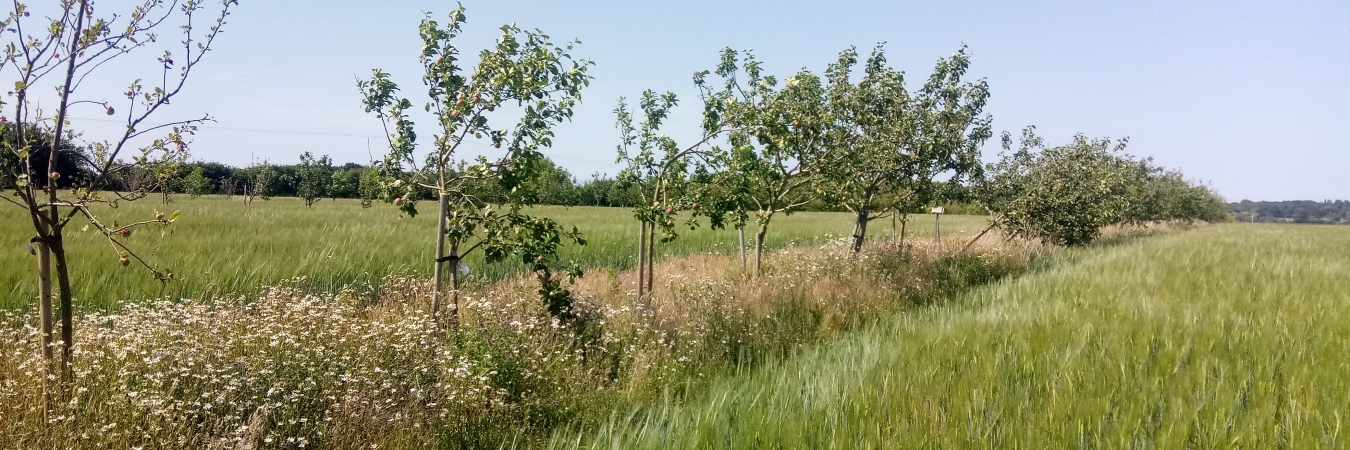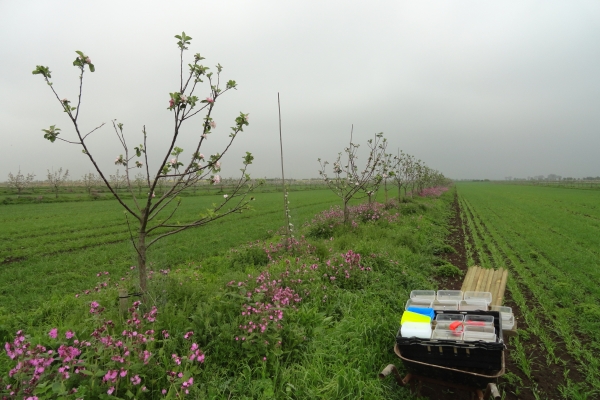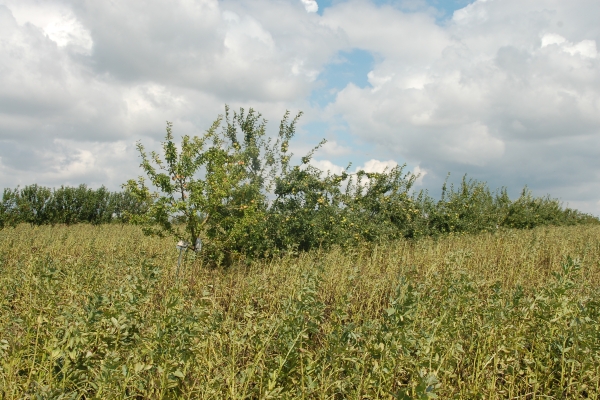Farming with trees: a potential ‘win-win’ for sustainable food production and biodiversity?
A plain language summary of PhD thesis
Resource explained
With the global population approaching 8 billion, we face an ever-increasing challenge to make efficient use of land for production of resources such as food and timber, while conserving biodiversity and safeguarding the environment for future generations. The practice of farming with trees, or agroforestry, could be one strategy to help meet this challenge, on the premise that trees make use of the space above and below annual crops while benefitting biodiversity. This summary (based on the PhD thesis ‘Evaluating the effects of agroforestry versus arable systems on functional biodiversity and associated ecosystem services’ conducted via the University of Reading) aimed to test this. Data was collected from UK farms to explore the impact of in-field fruit and timber trees on biodiversity, services provided by biodiversity such as pollination and the natural regulation of pests, crop production, and farm income…
Findings & recommendations
- Strong evidence was found that agroforestry practices increase the diversity of plants and insects compared with crop fields without trees.
- Annual seed-spreading weeds and very mobile pests with specialist diets were more associated with treeless fields.
- There was evidence of more effective natural control of pests in agroforestry fields.
- The population and diversity of bees benefitted from trees within crop fields. The bee community also had a much wider range of traits in agroforestry fields. This indicates a more effective and resilient pollination service than in treeless fields.
- No evidence was found that yields of wheat and barley were affected by the presence of apple trees, but oat yields were reduced by 11% on average compared with treeless fields. However, economic modelling predicted that planting apple trees can increase farm income in the long-term, because the reduction in cereal yields is more than compensated by producing a valuable fruit crop.
- Managing the space below trees to encourage wildflowers increased populations of the pest predators while suppressing aphid colonies on apple trees and reducing fruit damage, compared with regularly mown vegetation.
- The flowering vegetation increased pollinator visits to apple flowers, suggesting that this management practice can further enhance the benefits of agroforestry to beneficial insects.
Image courtesy of Tom Staton. All Rights Reserved








